During the home inspection, we usually see a large metal box hanging from the ceiling of the utility room in the basement. The two sides of the box are connected with duct pipes. Open the box, there will be a lot of dead insects and dust. Yes, this box is HRV or ERV. Unless you already have such a device in your home, you may not know what HRV (heat recovery ventilation) and ERV (energy recovery ventilation) mean. They are both ventilation systems specially designed for houses. So what do HRV and ERV do? What is the difference between the two? Which model is better for your home?
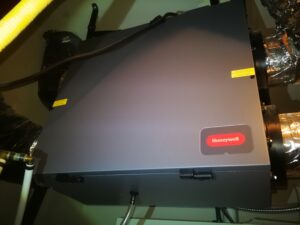
What do HRV and ERV do?
The two types of systems have the following common functions:
HRV and ERV exhaust pollutants (for example, peculiar smell, smoke, dust) and excessive moisture suspended in the indoor air;
Circulate the air in the house regularly. Once the circulation is completed, the exhausted air will be replaced with an equal amount of fresh air;
Equipped with filters to filter out pollen, dust, and insects in the fresh air;
Link to the existing heating system through the pipes and connect to every room in the house;
In winter, they can transfer the heat from the exhausted air to the air entering the room.
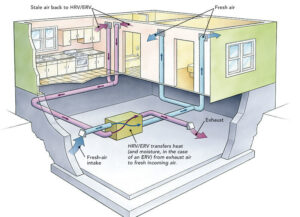
What are their differences?
The main differences between HRV and ERV are:
In winter, ERV can transfer humidity from the exhausted air to the air entering the room, and can maintain indoor humidity; HRV can only reduce the humidity of indoor air, and it needs to cooperate with a humidifier to maintain indoor humidity.
In summer, the humidity in the air entering the room will be removed by ERV. It saves energy by reducing the load of the air conditioning system and dehumidifier. However, HRV cannot remove the humidity of the air entering the room.
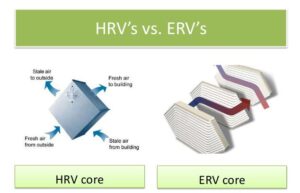
How to control HRV and ERV?
Some HRV and ERV are equipped with a separate control switch on the wall, usually interconnected with the fan of the furnace. When the HRV is turned on, the fan of the furnace will rotate for ventilation;
There are also HRVs that do not have a separate control switch. In winter, as soon as the furnace is turned on or only the fan is turned on, the HRV starts to ventilate. Sometimes the furnace and air conditioner at home do not work in April or October. If you want to ventilate the house, you can manually turn on the fan on the thermostat for a while, and the HRV can work.
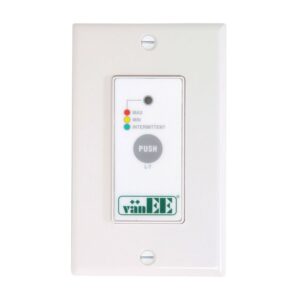
How to make a choice?
The choice between HRV and ERV depends on the humidity level in the house, but the following points should also be considered:
The number of people in the home – HRV is suitable for families with a larger number of people and therefore more humidity. Conversely, the fewer people in the house and the drier the air, ERV is the better choice.
House size-Generally, HRV is most suitable for small and medium-sized households where humidity will accumulate quickly; ERV is suitable for larger houses with drier air.
Airtightness of the house-HRV is more suitable for houses with better airtightness.
Climate-ERV is more suitable for cold and dry climates; HRV works better for a humid and mild climate.
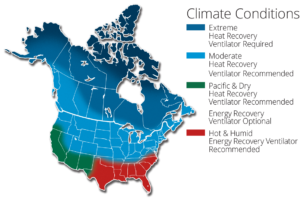
Knowing so much, are you ready to choose between HRV and ERV?
